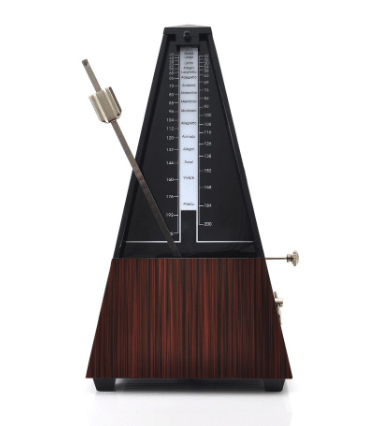In modern music, groove and time are crucial. In this episode of John Henny's The Intelligent Vocalist podcast, he shares with us helpful ways of developing your groove and time.
Learn from John as he explains the fundamentals of developing your musicality and timing through listening to music. He suggests that you listen to a variety of genres, from jazz to hip-hop, and pay attention to the different rhythms and grooves. By doing this, you will be able to pick up on the nuances of each genre and learn how they are used in other contexts.
Groove and Time: What Are They?

Contemporary music is time and groove-oriented. But there needs to be more emphasis on the fact that time and groove are different things. While some musicians can have good time and keep steady, their ability to groove may not be as strong.
Groove is nuanced time, and time is a deep-level skill requiring awareness and application. In a sense, groove is a concept and a collaboration between the singer and the musicians.
As John clarifies, musicians who play instruments are at a skill level where they have a deep connection to timing and groove. This is in contrast with musicians who are only focused on their singing skills.
Songs with great grooves are magical; you play them the entire time, and they don't stop until you get enough of them.
Our favorite music artists have performed some of our favorite songs that made us dance to the rhythm. Michael Jackson, for example, has had dance tracks with fantastic grooves. His fellow artists, Marvin Gaye and Stevie Wonder, also have a fair share of songs whose bass drives and the rhythm section is not solely focused on keeping time.
Ways to Develop Musical Groove and Timing

Groove has a human element in it. John uses American drummer and percussionist Rick Marotta as his prime example of a musician who performed beautifully on all kinds of tracks back in the day. Every time he's by his drum kits is a magical moment and an outstanding performance.
Technology has improved so much these days that even machines can build a groove. Drum machines are actually programmed with imperfections, especially the more sophisticated machines where you can add more swing and make it less rigid and perfect. This imperfection is the epitome of what John meant when he mentioned that groove has a human element.
Along with establishing the tempo, vocalists must also be able to groove differently in contrast to the instruments. Just like a drummer, we can feel the exact time and adjust accordingly while still being musical. We can push or drag our notes to create a different sound than the drumbeat.
John provides helpful methods for honing musical timing and groove, so we can transform abstract concepts into a consistent tempo.
Listen to Songs with Great Grooves

Everyone needs to work on their sense of time, although some people have more of an innate talent. John suggests that you start by listening to different genres of music, paying attention to the nuances in each genre. This will help you develop an understanding of how different rhythms and grooves work, and recognize the subtle differences in each genre and how they affect the overall sound.
Vocal coaches like John can help identify great songs to listen to, so we highly recommend you check his podcast, especially this episode. His recommendations will help you understand the groove and timing by listening to the entire song or watching its music video.
Pay Attention to Timing
Pay attention to timing when you are playing, singing, or listening to music. Timing is the key to creating a great groove. Awareness of the tempo and how it changes throughout the song is essential.
Listen for the subtle elements in the music, like accentuation, syncopation, and dynamics. This will help you improve your timing and create a better groove.
Timing is a skill that can be developed with practice. You can pull in and out of that when you gain mastery over time, feel the groove, and lock in with the musicians. As your phrasing is still developing your sense of time, you can find voice teachers and music classes that will help you to work on it before you really begin to pick up your sense of groove.
Get Right on the Metronome

A metronome is an excellent tool for developing your sense of time and groove. It's helpful to practice with a metronome regularly, as it will help you stay on time and build your internal clock. John suggests that you start by playing simple beats at a slow tempo, then gradually increase the speed as you become more familiar with it.
A metronome helps by providing a steady beat that you can lock into and practice with. In the podcast episode, John took the time to demonstrate how it's done. He tells us to pay close attention and not rush the beat, as this will help us stay on time and develop our internal clock.
Take Charge

After getting right on the metronome, ensure to be mentally leading it. John's logic is straightforward: you do not follow the accompaniment when you work with an accompanist. You are the singer. You take charge of where the notes are placed and where you are in the song.
Taking charge means that you are in control of the groove and timing. You can decide when to rush or lay back, when to accentuate specific notes, and how to shape the overall sound. This is a great way to develop your sense of musical timing and groove.
Conclusion
Developing your groove and time is an important skill for any musician. It requires practice and dedication, but it can be done. John has shared some helpful tips on how to develop your sense of timing and groove. Listen to songs with great grooves, pay attention to the nuances in the music, practice with a metronome, and take charge of the groove. With these tips, you can become a better musician and create great music.
Staying in Touch
If you want to know more about John, you can visit johnhenny.com. There you can listen to previous episodes of The Intelligent Vocalist podcast, as well as access his blog posts. Join John's mailing list to get special offers that are exclusive to his mailing list, and stay up to date on new courses and books.